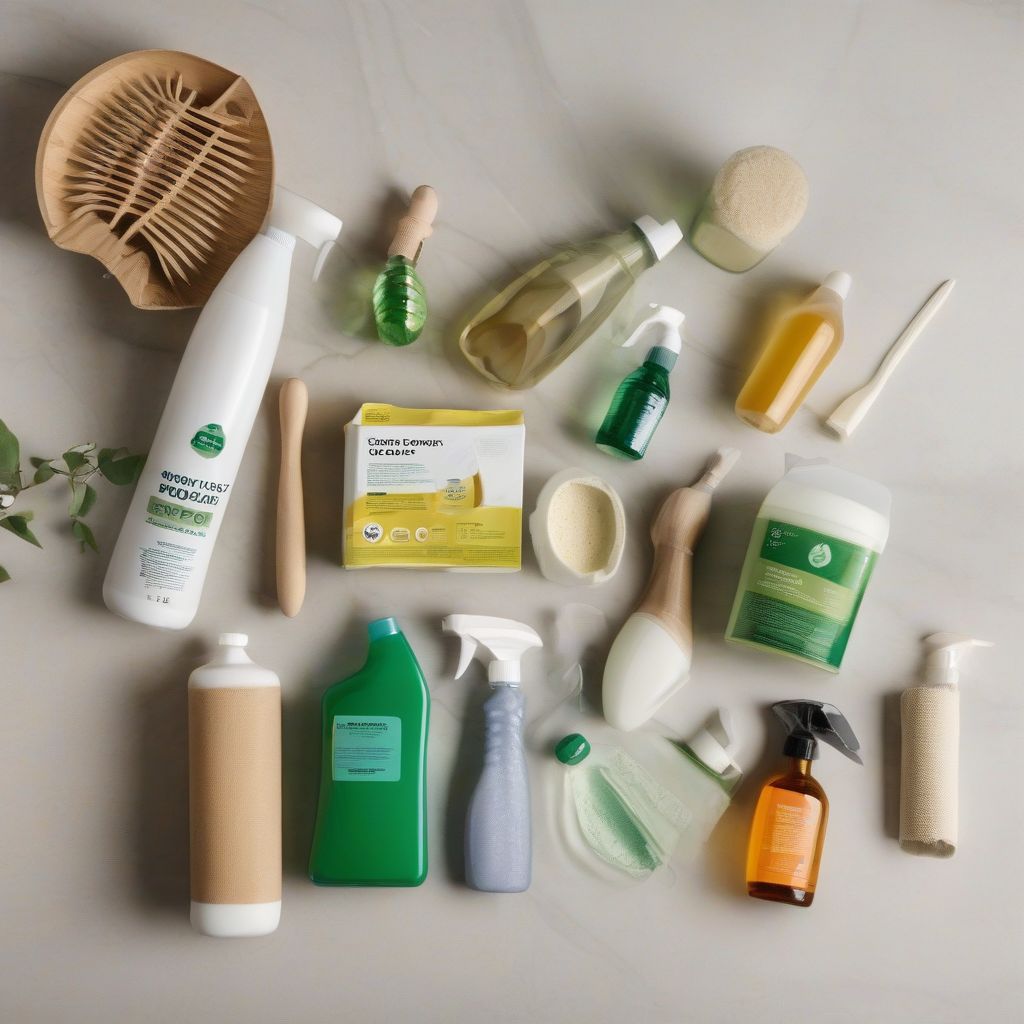As a nutritionist and meal prep coach, I’m passionate about healthy living, and that includes creating a healthy planet! We make choices every day that impact the environment, from the food we eat to the products we bring into our homes. Choosing eco-friendly products might seem daunting, but it doesn’t have to be. With a little guidance, you can easily make greener choices that benefit both your home and the environment. Let’s explore how!
Understanding Eco-Friendly Labels and Certifications
Walking down a cleaning aisle these days can feel like deciphering a secret code of eco-jargon! Don’t worry; we’ve got you covered. Here’s a quick guide to understanding common eco-friendly labels and certifications:
1. Certified Organic: This label goes beyond just food. Look for it on cleaning products, textiles, and even furniture to ensure they’re made with sustainably grown ingredients and without harsh chemicals.
2. Fair Trade Certified: This certification ensures that workers who produced the product were paid fairly and worked in safe conditions. This applies to everything from coffee and chocolate to clothing and home goods.
3. Energy Star: You’ve probably seen this one on appliances. It means the product meets strict energy-efficiency guidelines set by the EPA, saving you money on your energy bills and reducing greenhouse gas emissions.
4. Forest Stewardship Council (FSC) Certified: Look for this label on wood and paper products. It guarantees that the wood came from responsibly managed forests that provide environmental, social, and economic benefits.
5. Green Seal: This comprehensive certification verifies that products meet rigorous standards for environmental impact, safety, and performance. You’ll find it on a wide range of products, from cleaning supplies to building materials.
 Eco-Friendly Cleaning Products
Eco-Friendly Cleaning Products
Eco-Friendly Swaps for Every Room
Now that you know how to spot eco-friendly products let’s look at some simple swaps you can make in every room:
Kitchen:
- Reusable Food Storage: Ditch the plastic wrap and baggies! Invest in reusable beeswax wraps, silicone food bags, or glass containers for storing leftovers and packing lunches.
- Sustainable Cleaning Supplies: Trade harsh chemical cleaners for plant-based alternatives. White vinegar and baking soda are your new best friends for cleaning countertops, appliances, and even unclogging drains.
- Water Filtration System: Instead of buying bottled water, invest in a water filter pitcher or an under-sink filtration system to reduce plastic waste.
Bathroom:
- Bamboo Toiletries: Swap plastic toothbrushes for bamboo ones, and choose bar soaps and shampoos over liquid alternatives in plastic bottles.
- Refillable Cleaning Products: Look for brands that offer refills for hand soap, dish soap, and all-purpose cleaners to reduce plastic waste.
- Low-Flow Showerheads: These simple devices can significantly reduce your water and energy consumption without sacrificing water pressure.
Bedroom:
- Organic Bedding: Choose sheets, blankets, and pillows made from organic cotton, bamboo, or linen. These materials are better for the environment and gentler on your skin.
- Energy-Efficient Lighting: Switch to LED light bulbs, which use significantly less energy and last much longer than traditional incandescent bulbs.
- Green Cleaning Routine: Extend your eco-friendly cleaning practices to the bedroom. Dust with a microfiber cloth instead of disposable dusters, and vacuum regularly to reduce the need for harsh chemical cleaners.
Living Room:
- Sustainable Furniture: When buying new furniture, look for pieces made from sustainably sourced wood or recycled materials. Consider vintage or antique options to reduce your environmental footprint even further.
- Energy-Saving Power Strips: Prevent “phantom loads” by plugging electronics into power strips and turning them off when not in use.
- Eco-Friendly Decor: Choose natural materials like bamboo, jute, and wool for rugs and curtains. Decorate with plants to purify the air and add a touch of nature.
 Family Choosing Eco-Friendly Products
Family Choosing Eco-Friendly Products
Making Informed Choices: Tips for Success
Here are some additional tips to guide you on your eco-friendly journey:
- Read Labels Carefully: Don’t be swayed by greenwashing! Look for specific certifications and ingredients lists to make informed choices.
- Start Small: You don’t have to overhaul your entire house overnight. Begin by making gradual swaps in one room at a time.
- Prioritize Reusables: Whenever possible, choose reusable alternatives to disposable products. This simple change can significantly reduce your environmental impact.
- Support Eco-Conscious Brands: Vote with your wallet by supporting companies that prioritize sustainability and ethical practices.
- Proper Disposal: Remember to dispose of eco-friendly products responsibly. Check local recycling guidelines or look for products with compostable packaging.
A Healthier Home and a Healthier Planet
Choosing eco-friendly products for your home is a powerful way to reduce your environmental footprint and create a healthier living space for you and your loved ones. By understanding eco-labels, making conscious swaps, and following these practical tips, you can make a positive difference one sustainable choice at a time. Remember, every small step counts towards a brighter, greener future!
[amazon bestseller=”eco-friendly cleaning products”]
